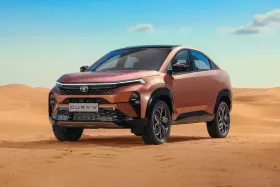In 2023, the electric vehicle (EV) landscape is undergoing a thrilling transformation, largely fueled by the Inflation Reduction Act (IRA). This landmark legislation is not only driving down EV costs but also accelerating their adoption worldwide. According to Bloomberg Green, global EV sales are set to surpass 14 million units this year, a testament to the powerful impact of policy interventions like the IRA. In this article, we delve into how the IRA is reshaping the EV market, what it means for consumers, and how you can take full advantage of the benefits it offers.
The Inflation Reduction Act: A Game-Changer for EVs
The IRA, enacted in the U.S., is a comprehensive piece of legislation aimed at tackling climate change and boosting the clean energy sector. But how exactly is it making EVs more affordable and attractive to consumers?
Tax Credits and Incentives
One of the most significant provisions of the IRA is the extension and expansion of federal tax credits for EV purchases. Here’s what you need to know:
- Up to $7,500 Tax Credit: The IRA extends the federal tax credit of up to $7,500 for new EV purchases. This credit applies to vehicles produced by manufacturers like Tesla, Ford, and Rivian, as long as they meet specific criteria.
- Used EVs Eligible: For the first time, the IRA introduces a tax credit for used EVs, up to $4,000. This makes electric mobility accessible to a broader audience.
- Income and Price Caps: To ensure these benefits reach middle-income consumers, the IRA includes income and price caps, making it a targeted approach to fostering EV adoption.
Manufacturing and Supply Chain Boosts
The IRA is also investing heavily in domestic manufacturing and the EV supply chain, which translates into cost savings for consumers:
- $60 Billion in Grants: Allocated for battery manufacturing and critical mineral processing, these investments are expected to lower battery costs significantly, according to MIT Technology Review.
- Job Creation: By incentivizing the production of EV components domestically, the IRA is creating thousands of jobs, further strengthening the economy and reducing manufacturing costs.
How the IRA is Boosting EV Adoption
With cost being a primary barrier to EV adoption, the IRA is effectively lowering this hurdle. But what other factors are at play?
Charging Infrastructure Expansion
The IRA isn’t just about tax credits; it also addresses one of the biggest challenges for EV users—charging infrastructure:
- $7.5 Billion for Charging Stations: This funding is earmarked for the development of a nationwide network of charging stations, making it easier than ever to own and operate an EV.
- Focus on Underserved Areas: By prioritizing rural and underserved urban areas, the IRA ensures equitable access to charging facilities, a crucial step in widespread EV adoption.
Encouraging Technological Innovation
The IRA’s support extends to technological advancements that make EVs more efficient and appealing:
- Investment in R&D: Funding for research and development in next-gen battery technologies is expected to lead to longer-range and faster-charging EVs, as reported by PV Magazine.
- Partnerships with Tech Giants: Collaborations with companies like Tesla and Rivian are driving innovation in autonomous driving and connectivity features, enhancing the overall EV experience.
Practical Tips for Prospective EV Buyers
With the IRA shaping the future of EVs, how can you, as a consumer, benefit from these changes?
How to Maximize Tax Credits
- Eligibility Check: Before purchasing, confirm that the vehicle qualifies for IRA tax credits. Websites like InsideEVs provide updated lists of eligible models.
- Used vs. New: Consider the benefits of buying a used EV with potential savings from the $4,000 tax credit.
- Timing is Key: Make your purchase before the credits expire or change, as legislative updates can occur annually.
Where to Charge Your EV
- Plan Ahead: Use apps like PlugShare to locate charging stations along your route.
- Home Charging Options: Consider installing a home charging station. The IRA may offer rebates or incentives for this installation, further reducing costs.
What to Compare When Buying
- Range and Efficiency: Compare models based on range per charge and energy efficiency to find the best fit for your needs.
- Total Cost of Ownership: Factor in savings from tax credits, reduced fuel costs, and maintenance when calculating the overall expense.
Conclusion: The Road Ahead for EVs
In 2023, the IRA is not just a piece of legislation; it’s a catalyst for change in the EV industry. By reducing costs and addressing infrastructure challenges, it is paving the way for a future where electric vehicles are the norm rather than the exception. As consumers, seizing the myriad opportunities presented by the IRA can lead to significant savings and a more sustainable lifestyle.
Are you ready to make the switch to an EV? With incentives at an all-time high and technology advancing rapidly, there has never been a better time to embrace electric mobility. What are your thoughts on the future of EVs? Let us know in the comments below!
As we look to the future, the continuous evolution of battery technologies and the expansion of charging networks promise even more exciting developments. Stay updated with the latest in EV news, and join the revolution towards a cleaner, greener tomorrow.

